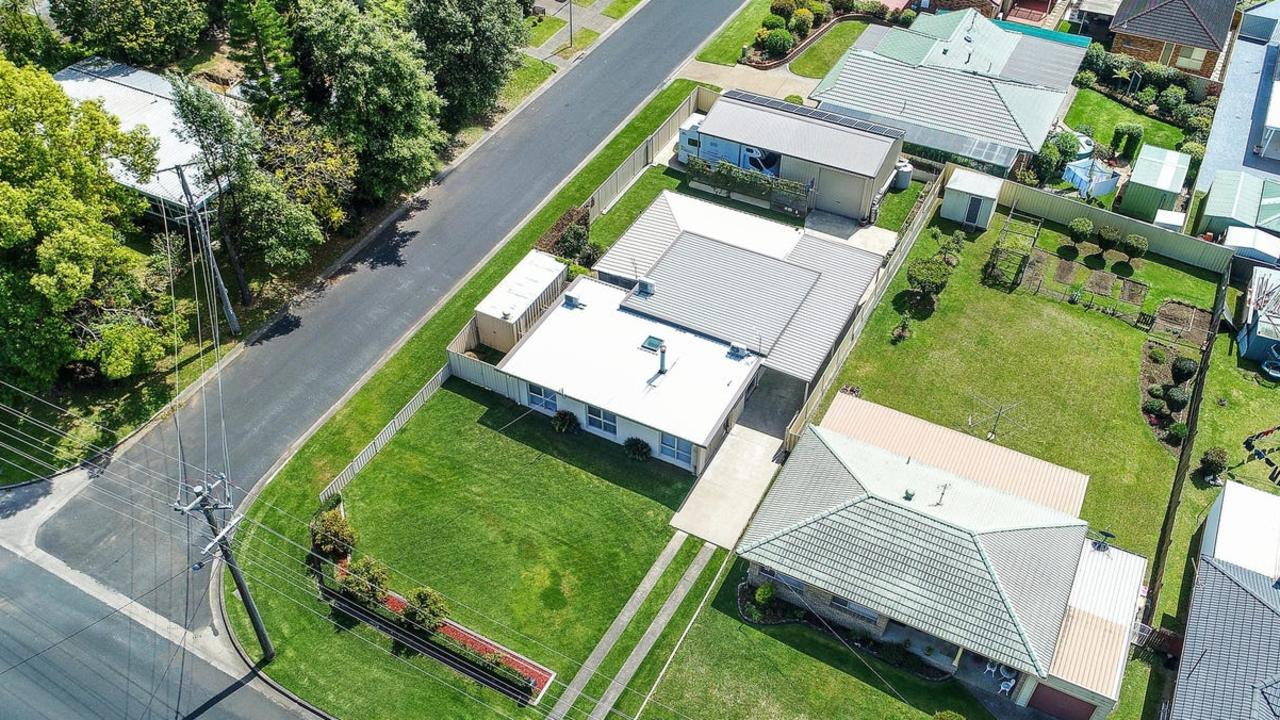South coast bushfires: Resilience and rebuilding a year on from the devastating summer
The devastating bushfires of last summer changed the lives of so many though heartbreak, bravery and luck. Meet the true heroes of the south coast rebuilding their homes, businesses and hope.

The South Coast News
Don't miss out on the headlines from The South Coast News. Followed categories will be added to My News.
This month marks one year since some of the country’s most devastating bushfires broke out on NSW’s usually idyllic south coast.
It was as early as June that the state’s emergency authorities began warning of an earlier fire season with potentially devastating impacts.
The warnings everyone feared started coming true when parts of the south coast were hit with catastrophic fire warnings in November.
Those warnings quickly progressed to an dire emergency situation, when the Currowan fire began the coast’s inferno on November 25, burning for more than 70 days, taking three lives, 312 homes and almost 500,000 hectares of bush with it.
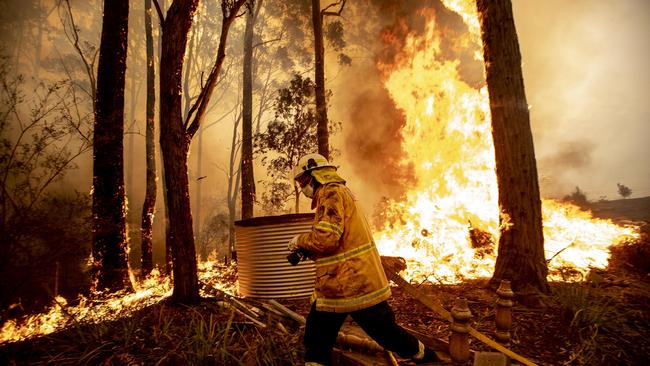
It’s hard to believe that a fire in remote bushland could do so much damage, with communities still struggling to rebuild more than a year on.
Over the course of what should be the happiest and most relaxing month of the year, the coast was sent into a state of chaos. While temperatures soared, the sun did not shine. The usually blue skies turned red, quiet suburban streets were blanketed in thick black smoke only broken up by red and blue lights and the roaring sounds of flames and sirens.
It seemed the worst of the fire just kept coming. First it ripped through Bawley Point and Termeil on December 5, bringing a sense of relief to many when it finally subsided. But the heat, coupled with months of zero rainfall fanned the fire, which erupted again on New Year’s Eve, engulfing Conjola Park, where it decimated 89 homes.
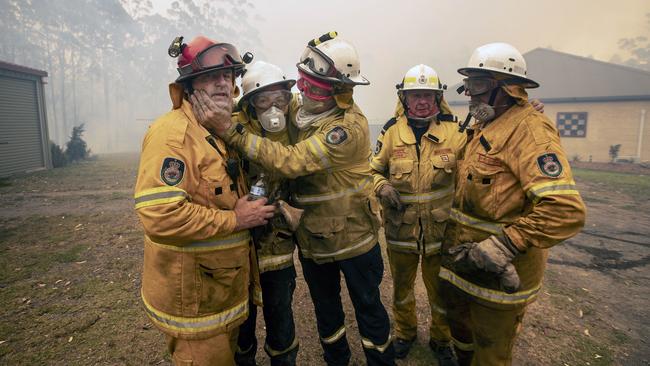
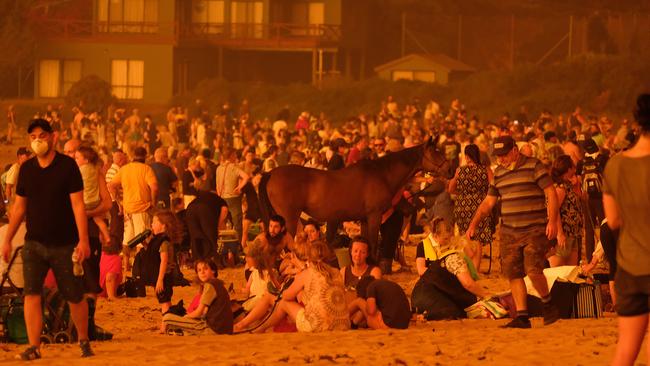
The famous beaches became a place of sanctuary and safety, as holiday makers and locals were left stranded, waiting for the flames to pass.
In early December, it seemed unbelievable that things could get worse, but the monster continued to grow, stretching north to the town of Kangaroo Valley and as far south as Brogo, near Bega.
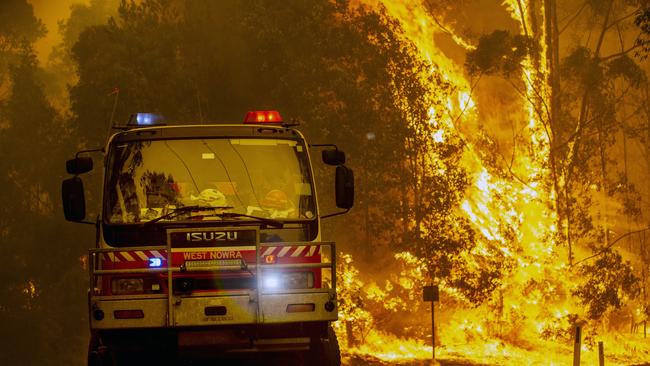
Through December and January, communities were faced with immediate and terrifying danger, with everyday people forced to make horrific decisions, some that separated them from their families, some that saw them lose, or save, their homes, and some that tragically claimed their lives.
While this December has been mild with plenty of rain, it can’t be forgotten that entire communities are still living through the impacts of last year’s black summer, there are residents who have just barely started to pick up the pieces and rebuild their lives, and more who won’t for some time yet.
THE SOUTH COAST’S NEW YEAR’S EVE HORROR
On New Year’s Eve, the Badja Forest fire reached the far south coast, burning through 315,512ha over more than a month, destroying more than 400 homes and claiming four lives, including 62-year-old Robert Salway and his son, 29-year-old Patrick Salway at Wandella.
On the far south coast, the small community of Cobargo was the hardest hit, with 70 homes lost, five facilities destroyed, 168 outbuildings lost and a further 33 homes damaged by fire.
It was followed by the largest evacuation of people in the nation’s history, with tourists from Nowra to the Victorian border ordered to go home by the NSW Rural Fire Service.
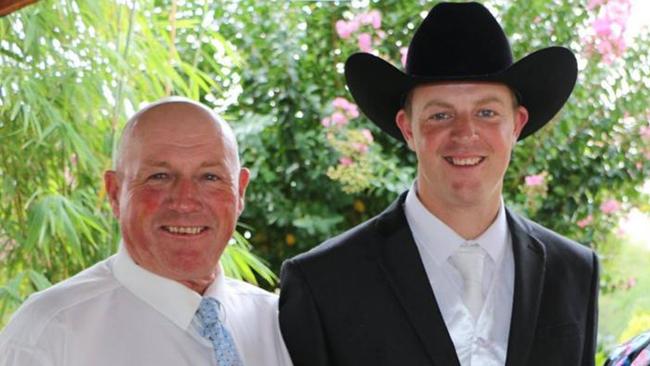
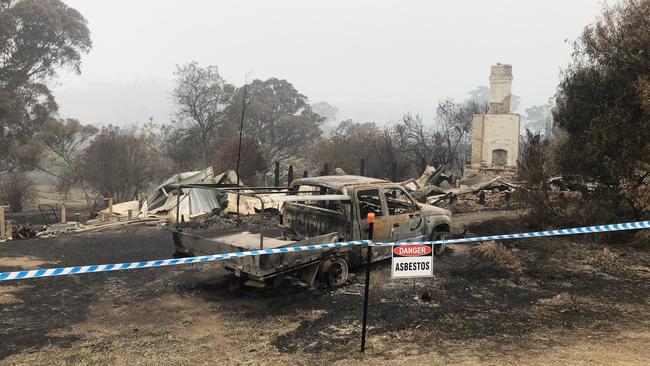
Cobargo dairy farmer and Bega Valley councillor Tony Allen was a close friend of the Salways, and said he, unlike many others, was lucky not to lose all his stock and family homes.
“Our cows sought shelter in gullies, and we were lucky the wind changed and took the fire south,” he said.
“Embers were landing all around the property and all the paddocks around us were lit with fire. Just the fury of it was immense, and as one person told me, the fire had hate written all through it.
“It rolled through paddocks like a tidal wave. The pace and heat of it was unforgettable.”
Mr Allen said so unique was the scale of the fires, the local Djiringanj people have stories of floods and sea level rise but not fire.
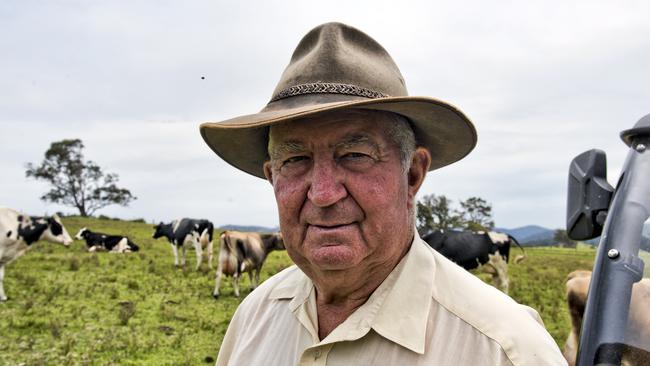
He said residents who stayed to protect homes succeeded in doing so but say they will never do it again.
“It was an awful fight. It’s different to fear. Once you’ve made your decision to stay, you have to do what you can do to survive,” Mr Allen said.
He said the loss of lives “will be felt for a long time”, and the town was lucky hundreds of people miraculously escaped through flames.
MENTAL HEALTH IMPACTS
Mr Allen said mental health in the region is still the biggest concern, and a doorknocking of every home and a needs-based analysis of every resident should’ve been completed as soon as possible.
“When I’m out there talking to people it is an issue,” he said.
“There are some very sad cases of broken marriages and people made destitute.
“You don’t realise how bad it is unless you’ve been in it.
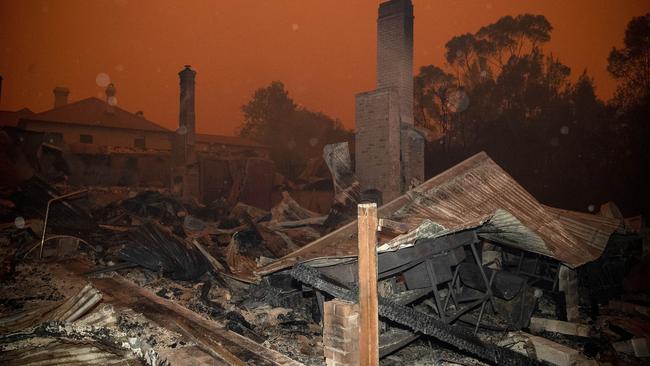
“We should’ve gone house to house to make sure everyone was accounted for and professional councillors brought in to help people.
“Everyone is doing their best, but there is a lot of sadness out there.
“There’s adults living in caravans who’ve worked hard their whole lives and suddenly everything is gone. It’s an awful shock.”
REBUILDING AND RECOVERY
Mr Allen said just one in five destroyed homes have been approved to rebuild, and the difficulty in getting builders and tradespeople means some residents are looking at another 12 months before rebuilding.
In the first nine months of 2020, there have been 447 DAs – including 142 new dwellings – lodged in Bega Valley Shire Council alone with a combined total of almost $176 million.
“It’s an enormous process to go through. A lot of people have run out of insurance claims that were subsidising rent for 12 months and a lot of people were uninsured,” Mr Allen said.
He said a memorial Cobargo Resilience Centre is being planned for the refurbished town centre at Cobargo, fitted with a theatre, cafe, ice creamery, garden, museum and a reflection centre.
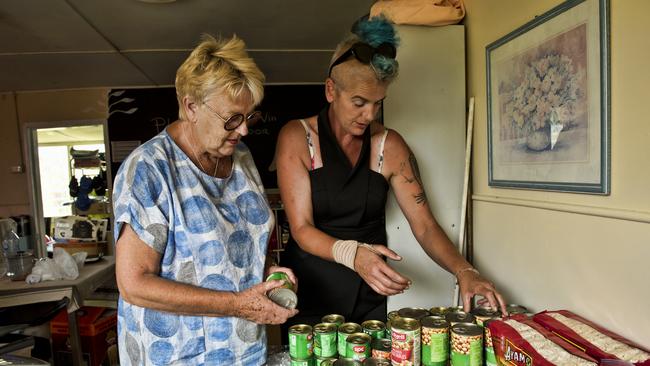
Danielle Murphy and Chris Walters, who help run the Cobargo Recovery Centre four days a week, said letters of support and gifts sent from across the country have helped keep many residents from hitting rock bottom.
The centre will be open for 24 hours on New Year’s Eve, in case residents need support through the anniversary of the deadly blaze.
Ms Walters said many residents are looking for some form of “hope to hold on to”.
“What we’re seeing is people are pretty exhausted,” Ms Walters said.
“They’ve been battling red tape, and are now almost at Christmas and the anniversary of the fires. People are pretty low.
“Some days people are chirpy, but the next day they’ll fall in a heap. There are very mixed feelings.”
Ms Walters said residents are “not looking too far into the future” and focused on the “day-to-day struggle” of recovery.
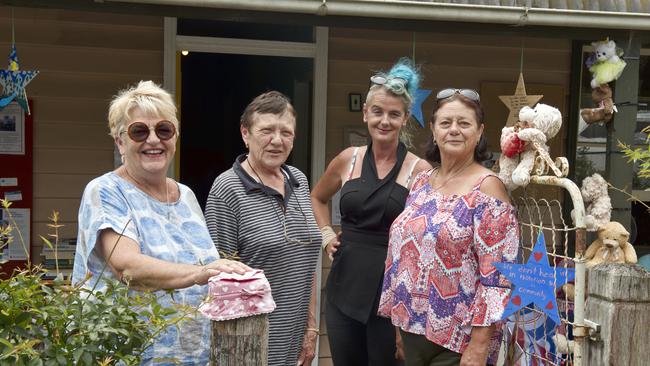
Ms Murphy, who helped evacuate three homes on New Year’s Eve and famously confronted Scott Morrison at the evacuation centre, said for some residents the trauma of the devastating fires is only just sinking in.
“People who have been stoic are now crying for the first time,” she said.
“As we’re approaching the anniversary the media is showing images of the fires, and bringing it back up for people. I kind of forgot it was that big. It’s overwhelming to see it on that scale.”
Ms Murphy said many residents are suffering from “form fatigue”, and are seeking help they didn’t need six months ago to fill out grant applications.
“It’s becoming way too much for people,” she said.
Numbugga resident Janet Reynolds has faced three bushfires since 2018 when she tragically lost her home.
The 75-year-old is yet to rebuild and has been living between Bega and a caravan on her property since evacuating from the Black Summer fires on New Year’s Eve.
Her home became an unofficial evacuation centre for many older residents, and says she worries for future generations if fires become more common.
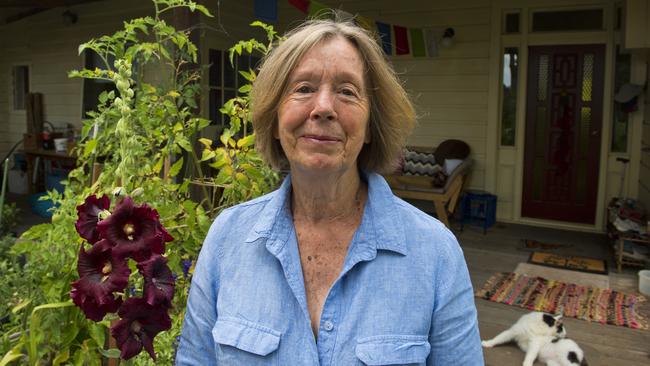
Many of her friends have created elaborate sprinkler systems in anticipation of future fires.
“The fires at the beginning of this year were very disturbing and distressing for our community,” she said.
“There is resilience and also a quiet acceptance that the future is uncertain. There is a lot of anger at the inaction of our government in the area of climate action.”
She said through the tragedy, she has seen “the best of human nature” with communities coming together and strangers lending a hand.
“I try not to become anxious, and take one day at a time,” she said.
“My days are running out but I want to leave a beautiful legacy and create a haven for birds and native animals before I go.”
In the Eurobodalla, around 80 per cent of the shire, or more than 271,000 hectares, was burnt, around 500 homes were destroyed, a further 280 damaged and more than 1230 additional facilities and outbuildings lost or damaged. Three lives were lost.
In the Shoalhaven, council received a total of 111 development applications for bush fire impacted properties, most south of Sussex Inlet, at a value of almost $45 million, while in the Eurobodalla 282 applications were received.
At the time of the fires, NSW recovery co-ordinator, Dick Adams, described the recovery process as the largest operations in Australia’s history.
LOOKING TO THE FUTURE, ONE YEAR ON
The morning of January 4 in the small community of Kangaroo Valley started out like many other days in the weeks leading up to it – smoky, hot and windy.
Alison Baker, who raised her now-adult children in the Valley with her husband Paul Williams, remembers that it was precisely at that time when she realised staying and defending her property was no longer an option.
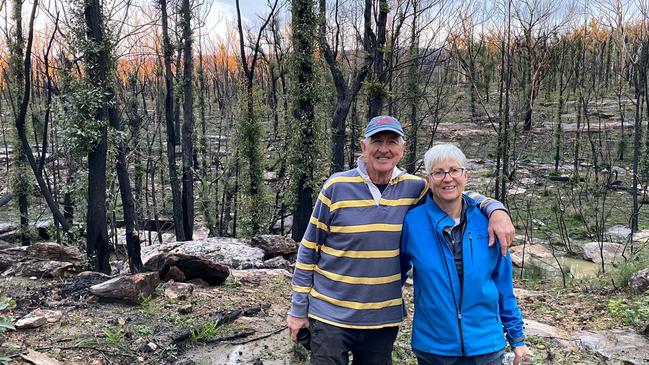
“I got visuals from Tallowa (nearby) and what I saw made me realise there was no option to stay and defend our home,” she said.
Ms Baker and Mr Williams have lived and worked in Kangaroo Valley for years, running holiday cottage accommodation on their Radiata Road property.
After doing all they could to ready their home, Ms Baker and Mr Williams got a call at 6.30pm, telling them they had 45 minutes to get off the property as southerly winds approached, pushing the fire toward their home.
The couple sheltered at their neighbour’s concrete home, thinking they’d be there for 30 minutes as the fire passed through.
“But that wasn’t the fire that descended upon our house,” Ms Baker said. “We got back at 10.30pm that Saturday night to find what we did”.
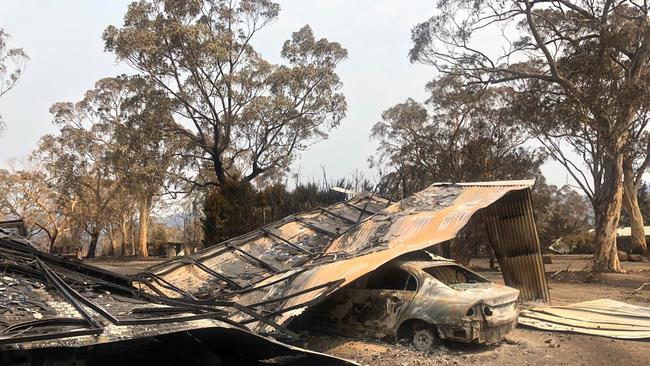
Their timber home of 25 years was now a pile of rubble on the ground, and two of their accommodation cottages had burned down.
“(When we) got back, the timber uprights on the other cottages were burning, but because we had 20 litre tubs of water at each door we were able to put out the fires,” she said.
“Had we not have been able to get back (to our property) the fires could have taken them too.”
Ms Baker said it was surreal coming back to her home and finding the green landscape black and charred.
“For myself I don’t really remember the emotion of the night, it’s happily in some box where it will stay,” she said.
“But coming back two hours later there was nothing green, not a plant, tree bush, not a stick of greenery.”
The fire that night destroyed dozens of homes in Kangaroo Valley. While it ruined cars, homes and years of memories, the blaze did nothing to bring down the Valley’s community spirit.
And it’s that sense of community that led Ms Baker and her husband to rebuild in the Valley, despite the horrific fire they endured.
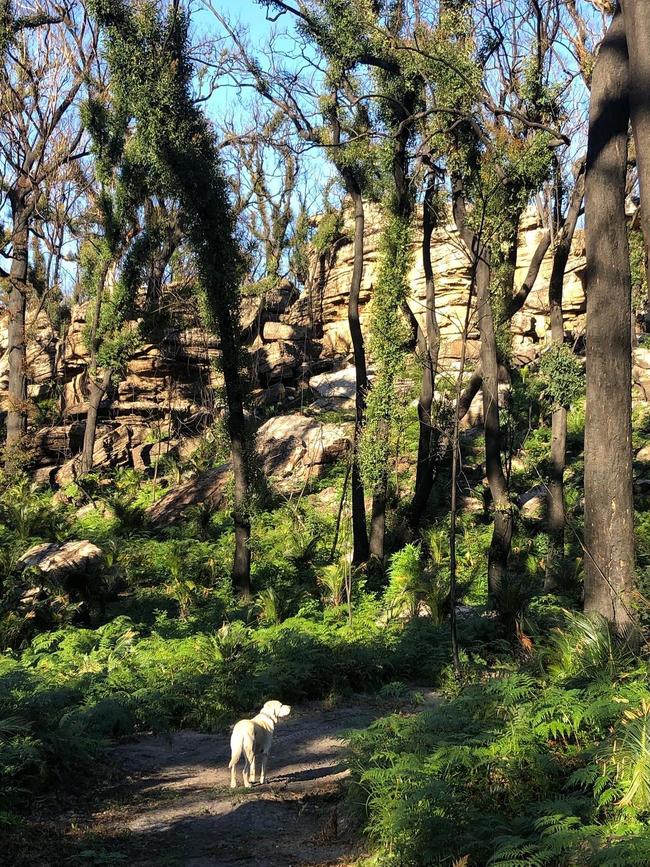
“Throughout January so many people turned up to help out with trailers, tools, mulch to help us get a good start, and tradespeople bent over backwards to help us,” she said.
Almost all of the past year has centred on getting the business back up and running – which means the rebuild on their home is yet to start.
“We’ve still got a lot to do here around the build of home, and we’re hoping to get things underway in the new year,” she said. “In terms of council, they’ve been very supportive, probably because Shoalhaven was affected all the way down.”
As the one-year anniversary of the tragic fire draws closer, Ms Baker said she and her family were looking forward to a new pace in 2020, as well as welcoming people back to their cottages for the busy Christmas season.
“I think we are looking forward to getting away a bit more, not being here 24/7,” she said.
“Being here and being able to get up every morning is fabulous, but in the same token you’ve got to get up and you pick your job and you put your head down and do it.
“We have our own special story but I think everybody is hoping the new norm is easier to digest in 2020.”
While January 4 is set to bring up some tough memories for the community of Kangaroo Valley, Ms Baker said it was comforting to be in a community that’s drawn together through crisis.



